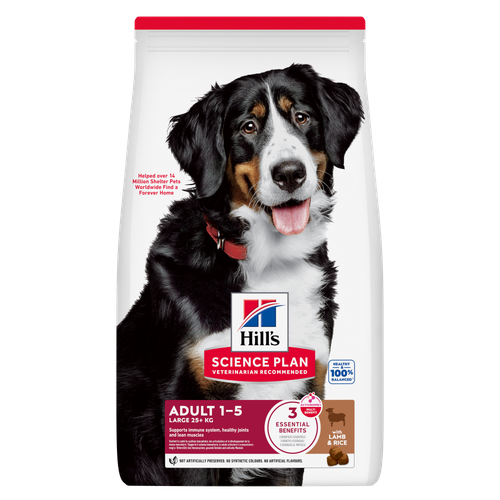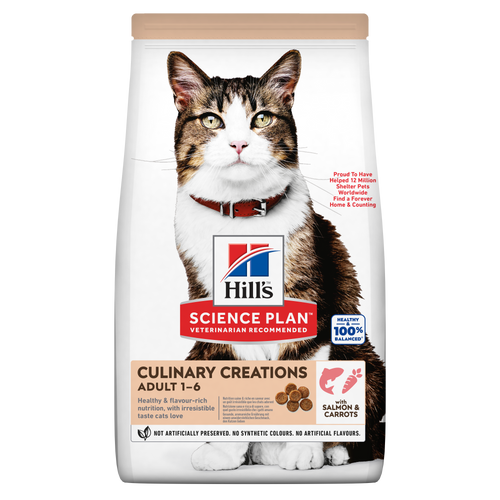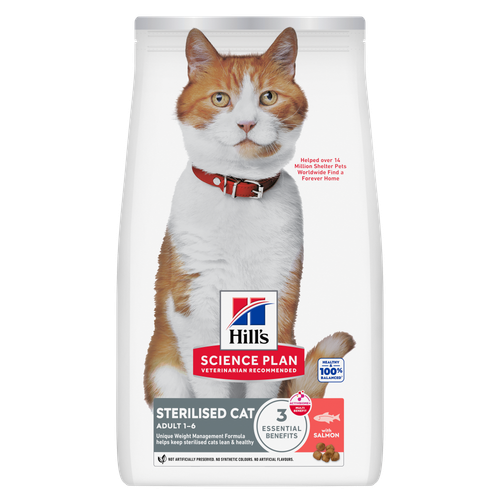
-
Find the right food for your petTake this quiz to see which food may be the best for your furry friend.Find the right food for your petTake this quiz to see which food may be the best for your furry friend.Featured products
 Perfect Digestion Large Breed Puppy Food
Perfect Digestion Large Breed Puppy FoodPrecisely balanced nutrition with Hill's ActivBiome+ prebiotic blend actively contributes to supporting digestive health and overall wellbeing to help your pet feel their best
Shop Now Large Breed Adult Dog Food
Large Breed Adult Dog FoodHill's Science Plan Large Breed Adult Dog Food with Lamb & Rice is a complete pet food, specially formulated with ActivBiome+ Multi-Benefit Technology.
This food is specifically designed to fuel the energy needs of large breed dogs during the prime of their life.Shop Now Adult Light Dog Food
Adult Light Dog FoodHill's Science Plan Light Adult Wet Dog Food is a complete premium pet food for adult dogs that tend to gain weight easily. This deliciously smooth loaf is formulated to deliver the appropriate amount of energy to support weight maintenance in adult dogs.
Shop NowFeatured products CULINARY CREATIONS ADULT CAT FOOD
CULINARY CREATIONS ADULT CAT FOODHill's Science Plan CULINARY CREATIONS Adult cat food with Salmon & Carrots was formulated to provide a great-tasting experience to cats. Its delicious flavour and texture are combine with essential nutrients to support cats' optimal health during the prime time of their life. Specially formulated with high-quality salmon protein, essential taurine for heart health & balanced minerals to support kidneys & bladder.
Shop Now Sterilised Adult Cat Food
Sterilised Adult Cat FoodHill's Science Plan Adult Sterilised Cat Dry Food with Salmon is specially formulated with ActivBiome+ Multi-Benefit Technology. It is a precisely balanced nutrition, tailored to meet the needs of sterilised cats, to help keep sthem lean & healthy.
Shop Now Adult Cat Food
Adult Cat FoodHill's Science Plan Adult Cat Food with Chicken is a complete pet food, specially formulated with ActivBiome+ Multi-Benefit Technology.
This food is specially formulated to fuel the energy needs of cats during the prime of their life.Shop Now -
Dog
- Dog Tips & Articles
-
Health Category
- Weight
- Food & Environmental Sensitivities
- Urinary
- Digestive
- Joint
- Kidney
-
Life Stage
- Puppy Nutrition
- Adult Nutrition
- Senior Nutrition
Cat- Cat Tips & Articles
-
Health Category
- Weight
- Skin & Food Sensitivities
- Urinary
- Digestive
- Kidney
-
Life Stage
- Kitten Nutrition
- Adult Nutrition
Featured articles The Incredible Science Behind Your Pet's Microbiome
The Incredible Science Behind Your Pet's MicrobiomeLearn what your pet's microbiome is, how it contributes to your pet's gut and overall health, and why nutrition is important in maintaining healthy microbiomes.
Read More Microchipping: The Facts | Hill's Pet
Microchipping: The Facts | Hill's PetThe government has announced that as of April 2016, all dogs in the UK must be microchipped by law.
Read More Pet Nutrition: What Makes "Healthy" Pet Food Healthy? | Hill's Pet
Pet Nutrition: What Makes "Healthy" Pet Food Healthy? | Hill's PetIn people, the right diet is very important. If you are eating the wrong way for your metabolism, activity level, age and lifestyle you could end up with health issues.
Read More -


Getting a kitten is always an exciting time, and watching a kitten develop from a gangly, super-cute ball of fluff into a beautiful, elegant cat is one of life’s true pleasures. Because many cats retain their youthful behaviour well into adulthood, you may wonder: when do cats stop growing and at what age are cats full-grown adults?
When Are Cats Full-Grown?
One day, you have a tiny kitten running around your house, and before you know it, they're a big cat. It may seem like they grow overnight, but cats actually go through six life stages, as explained by International Cat Care in their CatCare for Life initiative. One way to determine when your cat is full-grown is to see into which category they fall:
- Kitten (0 – 6 months)
- Junior (7 months – 2 years)
- Adult (3 years – 6 years)
- Mature (7 years – 10 years)
- Senior (11 years – 14 years)
- Super senior (15+ years)
Much like their human counterparts, the development stages of kittens are counted in weeks and months up until the age of two.


Tasty Tips
At What Age Do Cats Stop Growing?
At about one year old, your cat will be fully grown. Cats reach adulthood in the junior stage moving into the adult stage. You can think of this as your cat being in their late teens and 20s – young adults full of energy and verve.
 As your cat develops into adulthood, your veterinarian can help you determine your cat's ideal weight and recommend a meal plan to help optimise their health. You can work together to modify this plan as your cat moves into each new life stage. It's important to schedule this visit so that these baselines can be established, allowing you to keep an eye on your cat's wellness as they age. Regular check ups also allow you to keep an eye on your cat’s weight and body condition. Keeping your cat slim throughout their life will help them live longer and lowers their risk of certain diseases, such as diabetes.
As your cat develops into adulthood, your veterinarian can help you determine your cat's ideal weight and recommend a meal plan to help optimise their health. You can work together to modify this plan as your cat moves into each new life stage. It's important to schedule this visit so that these baselines can be established, allowing you to keep an eye on your cat's wellness as they age. Regular check ups also allow you to keep an eye on your cat’s weight and body condition. Keeping your cat slim throughout their life will help them live longer and lowers their risk of certain diseases, such as diabetes.
Pedigree and Mixed-Breed Cats
The vast majority of cats are what we call either domestic short hair or domestic long hair, or just mixed-breed. They’re just beautiful, unique cats of no particular breed. Although there are dozens of breeds of cat recognised around the world, their size doesn’t vary anywhere near as much as dog breeds do. The average cat weighs around 4 kilograms. The Maine Coon is the largest breed of cat and the males can weigh up to 10 kilos and grow to a height of 40cm! On the flip side, the smallest cat breed, the Singapura, weighs at the most 3.5 kilos. Not only is the Singapura smaller, but they also reach adulthood later, around two years of age.
Pedigree cats tend to be more prone to health problems than moggies because they are inbred. So if you do decide you want a pedigree, always make sure you do your research about what issues they may have and always choose a breeder that does all the appropriate health tests. Avoid cats that have extremes of body shape like very flat-faces, tiny legs or hairlessness. These cats can have a very poor quality of life due to their physical characteristics.
If you've raised your cat from a kitten or the junior stage of life, you have a pretty good idea of their temperament and social-emotional needs. You also know their favourite napping spot and favourite toy. As your furry friend grows up, you also want to ensure that they have a well-balanced, nutritious meal plan that's formulated for their age range, so they get the vitamins and nutrients they need. Your veterinarian can help you decide on the most appropriate food throughout all the fascinating stages of your cat’s life.


Christine O'Brien is a writer, mom, and long-time cat parent whose two Russian Blues rule the house. Her work also appears in Care.com, What to Expect, and Fit Pregnancy, where she writes about pets, pregnancy, and family life. Find and follow her on Instagram and Twitter @brovelliobrien.
Related products

Hill's Science Plan Senior Vitality Cat Food with Chicken & Rice provides precisely balanced nutrition that helps promote their everyday ability to get up and go.

Hill's Science Plan Adult Sterilised Cat Dry Food with Salmon is specially formulated with ActivBiome+ Multi-Benefit Technology. It is a precisely balanced nutrition, tailored to meet the needs of sterilised cats, to help keep sthem lean & healthy.

Hill's Science Plan Adult Cat Food with Chicken is a complete pet food, specially formulated with ActivBiome+ Multi-Benefit Technology.
This food is specially formulated to fuel the energy needs of cats during the prime of their life.

Hill's Science Plan CULINARY CREATIONS Adult cat food with Salmon & Carrots was formulated to provide a great-tasting experience to cats. Its delicious flavour and texture are combine with essential nutrients to support cats' optimal health during the prime time of their life. Specially formulated with high-quality salmon protein, essential taurine for heart health & balanced minerals to support kidneys & bladder.
Related articles

Understand common skin issues in cats and how to manage them effectively. Learn signs and prevention, and get care tips. Find out more at Hill's Pet.

Learn about the causes of cat dermatitis, how to spot the symptoms and the best treatment options. Visit Hill's Pet for detailed guidance and tips.

Learn how your cat's poo can be a good indicator of her overall health, including how to spot unhealthy or abnormal cat poop and what it might mean.

Cats with sensitive skin have special needs and even healthy cats can sometimes develop poor skin health. Learn more about sensitive skin symptoms in your cat, what you can do to help your pet feel more comfortable and get recommendations on sensitive skin cat food.

Put your cat on a diet without them knowing
Our low calorie formula helps you control your cat's weight. It's packed with high-quality protein for building lean muscles, and made with purposeful ingredients for a flavourful, nutritious meal. Clinically proven antioxidants, Vitamin C+E, help promote a healthy immune system.
Put your cat on a diet without them knowing
Our low calorie formula helps you control your cat's weight. It's packed with high-quality protein for building lean muscles, and made with purposeful ingredients for a flavourful, nutritious meal. Clinically proven antioxidants, Vitamin C+E, help promote a healthy immune system.

